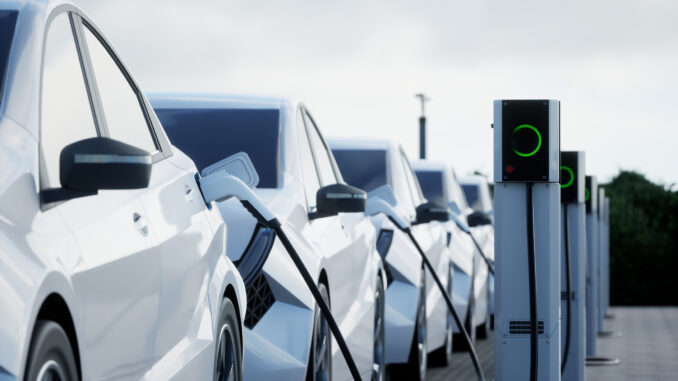
By Hank Russell
Two Long Island municipalities received more than $600,000 from the state for the installation of charging stations and fast-charging pedestals for electric vehicles (EVs). The money came from the state’s Municipal Zero-Emission Vehicle (ZEV) Infrastructure Grant program.
The program, which is administered by the state Department of Environmental Conservation (DEC), prioritizes clean transportation investments in communities most affected by pollution and climate change. The program includes a variable local match requirement based on the municipality’s median household income (MHI) and whether the ZEV infrastructure is located in a disadvantaged community, based on the disadvantaged communities criteria developed by the State’s Climate Justice Working Group.
Of the awards announced on April 21, approximately $885,000 were granted to municipalities located in disadvantaged communities in New York State.
The Town of Huntington will get $326,000 for the installation of four Level 2 charging ports and six Direct Current Fast Charging (DCFC) pedestals. The City of Long Beach was granted $296,080 for four Level 2 charging ports and two DCFC pedestals.
According to the U.S. Department of Transportation (DOT), Level 2 equipment offers higher-rate AC charging through 240 volts (in residential applications) or 208 volts (in commercial applications) of electrical service, and is common for home, workplace, and public charging. Level 2 chargers can charge a battery electric vehicle (BEV) to 80 percent from empty in 4-10 hours and a plug-in hybrid electric vehicle (PHEV) in one to two hours.
DCFC equipment offers rapid charging along heavy-traffic corridors at installed stations and can charge a BEV to 80 percent in just 20 minutes to one hour. Most PHEVs currently on the market do not work with fast chargers.
Level 2 and DCFC equipment have been deployed at various public locations including, for example, at grocery stores, theaters, or coffee shops. However, the DOT recommends considering its voltages, resulting charging and vehicle dwell times, and estimated up-front and ongoing costs when selecting a charger.
“My administration is committed to advancing the transition to a cleaner and healthier future for our environment, benefiting all New Yorkers,” Governor Kathy Hochul said. “Our continued investments in electric vehicle infrastructure encourage more drivers to switch to electric, reducing pollution and emissions across the State and improving the health and well-being of our residents and communities.”
Amanda Lefton, the DEC’s acting commissioner, added, “New York continues advancing the state’s transition to clean transportation with investments in municipal electric vehicle chargers to encourage the switch to plug-in hybrids and EVs. The DEC’s Municipal ZEV Infrastructure Grant program is expanding New York’s EV charging station network and supporting municipalities statewide taking climate action, investing in electric transportation, and helping realize the clean energy economy of the future.”

